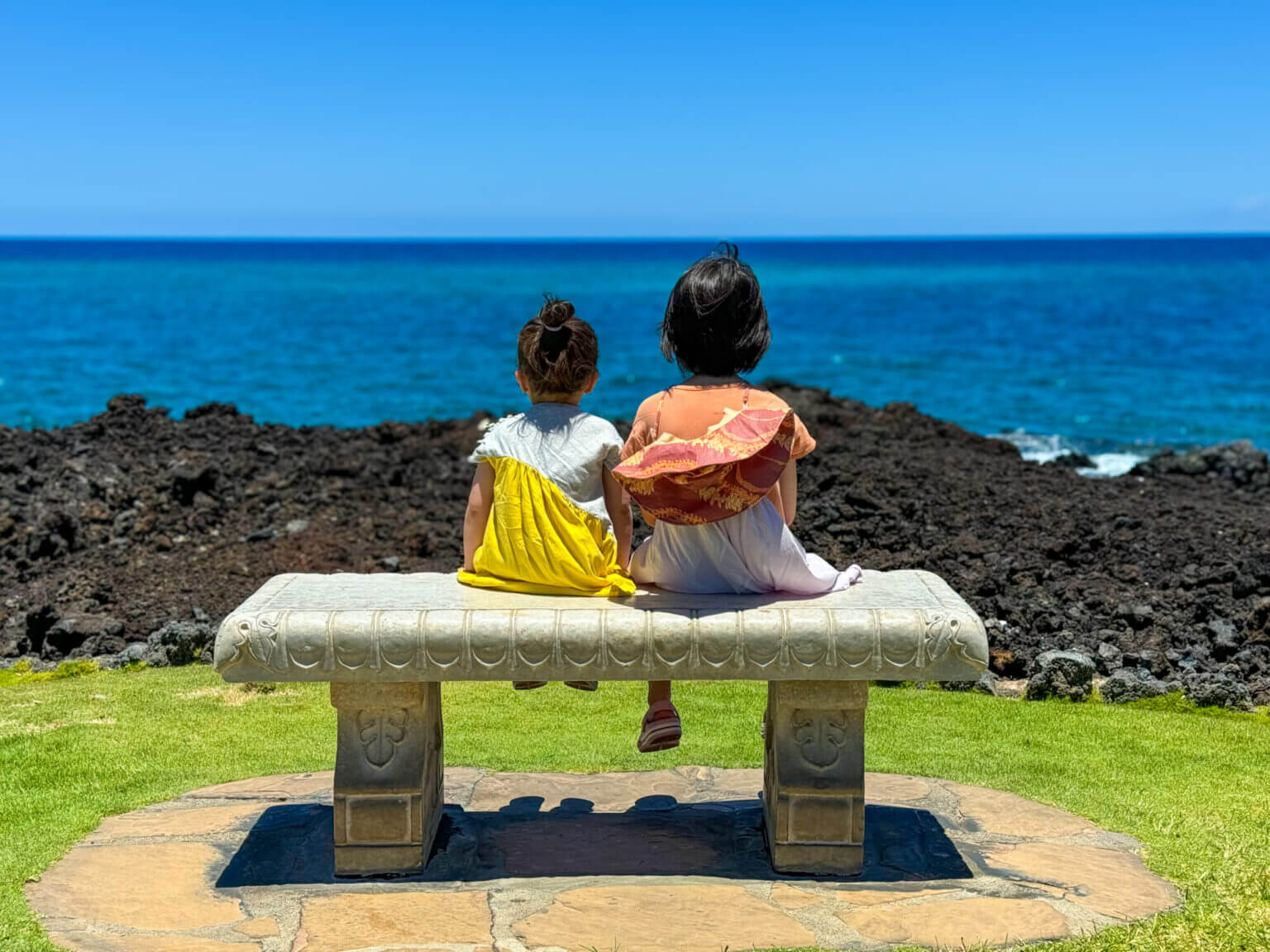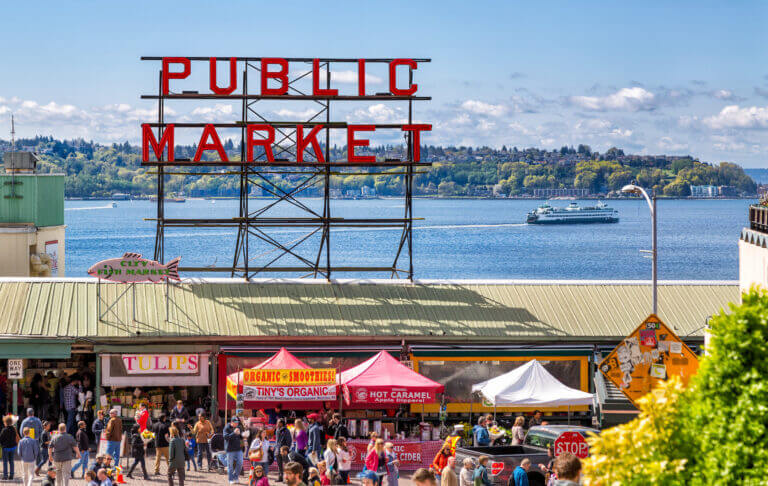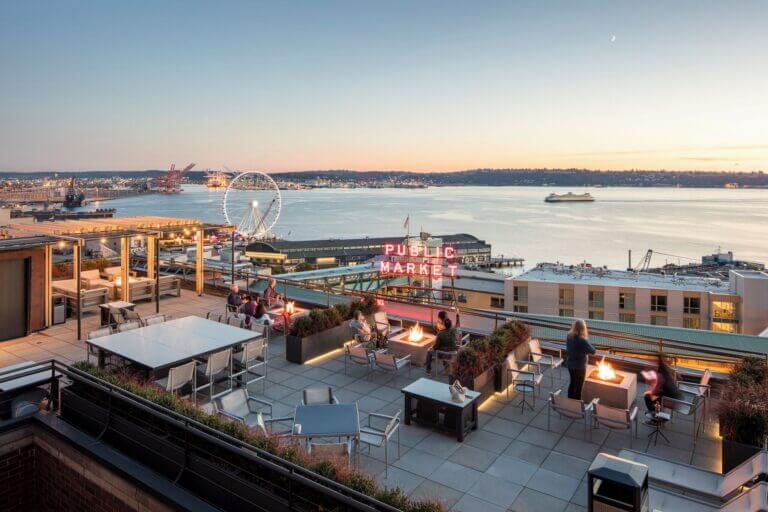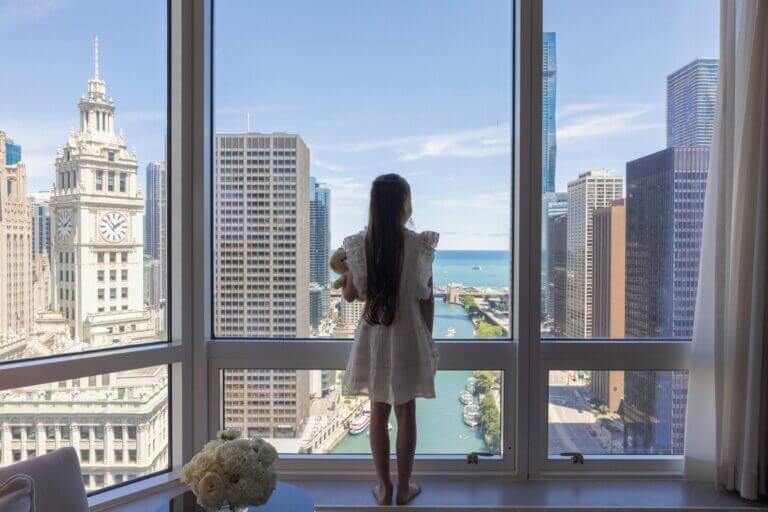If you’re planning a family trip to the Big Island of Hawaii, one of the first decisions you’ll face is: Should we stay in Hilo or Kona? It’s one of the most common questions I get from friends and coworkers planning their first (or fifth!) Hawaii vacation—and for good reason. The Big Island is huge, and each side offers a totally different experience for families.
I grew up in Hawaii with family across several islands, and now as a parent, I love helping other families make the most of their time here. Whether you’re traveling with toddlers, teens, or grandparents in tow, this guide will help you decide which side of the island is the right fit for your next adventure. Let’s dive in.
➡️ This post is part of our Big Island family travel series! Be sure to check out our follow-up post: Top 5 Family Resorts on the Big Island of Hawaii—a roundup of our favorite places to stay with kids in Kona and Waikoloa.
Table of Contents
Getting Around the Big Island: Yes, You’ll Need a Car
If you’ve never been to the Big Island before, you might be wondering:
“Can’t we just stay in one spot and drive to the other side for the day?”
Technically, yes. But with kids? That’s another story.
The Big Island is huge—it’s larger than all the other Hawaiian Islands combined. Driving from Kona to Hilo takes about 1.5 to 2.5 hours each way, depending on the route, weather, and stops. That means a roundtrip can easily turn into a 5- to 6-hour driving day, not including sightseeing.
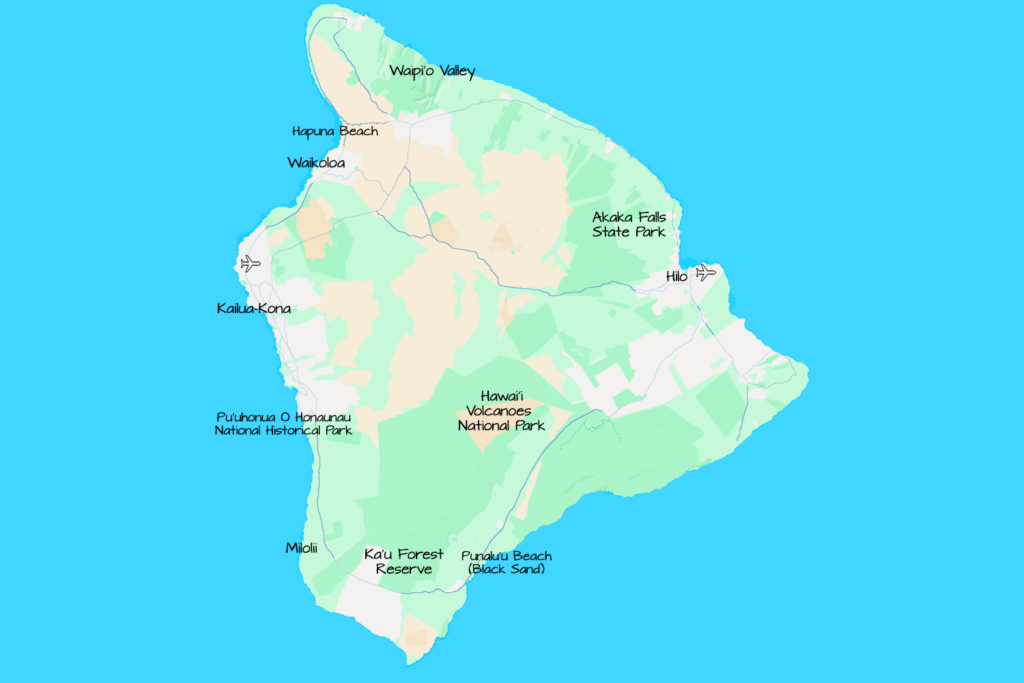
On our most recent trip, we chose to stay on the Kona side only—partly because we had the grandparents with us, and long drives just aren’t their thing. If you’re traveling with toddlers or grandparents who prefer shorter outings, you may want to pick one side as your home base and plan accordingly.
That said, if your kids travel well and you’re up for the adventure, splitting your stay between Hilo and Kona is a great way to experience both sides without marathon car days.
Can You Do a Day Trip from Kona to Hilo?
You can—but it’s a long day. If you’re determined to visit both sides in a single trip, we recommend:

Leaving early in the morning
- Making stops along the way—think waterfalls, scenic overlooks, or snack breaks
- Keeping your itinerary light so you’re not squeezing too much in
For younger kids or grandparents, the long drive can be tough. That’s why many families opt to split their stay or stick to one side and explore it deeply.
Road Trip Tips with Kids (And Grandparents)
If you’re hitting the road, a little prep goes a long way:
- Snacks, water, and layers are a must – The weather can shift quickly, especially if you’re driving through higher elevations or heading to the volcano.
- Bathroom strategy is key – Depending on your kids’ ages, you’ll want to plan restroom stops or come prepared. We bring our OXO travel potty for our toddler and it’s been a total lifesaver more than once.
- Entertainment saves the day – Our 7-year-old is now hooked on audiobooks, which has made long drives so much easier. She’ll get lost in a story, and suddenly the two-hour drive feels like nothing. We use Audible and it’s been totally worth it.
The OXO 2-in-1 Go Potty is a versatile solution for potty emergencies at home of on the go. It's designed for standalone use with disposable bags anywhere or as a potty seat on toilets, making it an essential tool for road trips and park adventures with kids. It's perfect for those "I need to go potty" emergencies.
Amazon Audible is a game-changer for family road trips! With thousands of audiobooks for all ages, Audible keeps kids entertained for hours—no screens needed. From magical adventures like Harry Potter to thrilling quests like Percy Jackson, there’s something for every age and interest. It’s a fun and educational way to pass the miles, spark imagination, and even make those “Are we there yet?” moments disappear.am
Hilo: Lush, Local, and Full of Charm
So, will it be Hilo, or Kona? If you love the idea of exploring waterfalls, local markets, and off-the-beaten-path gems, Hilo might be your family’s dream spot.
Over on the east side of the island, Hilo is green, tropical, and yes—a little rainier. But that rain comes with a major perk: it’s incredibly lush and beautiful. We love the feeling of slowing down here and soaking in the local culture.
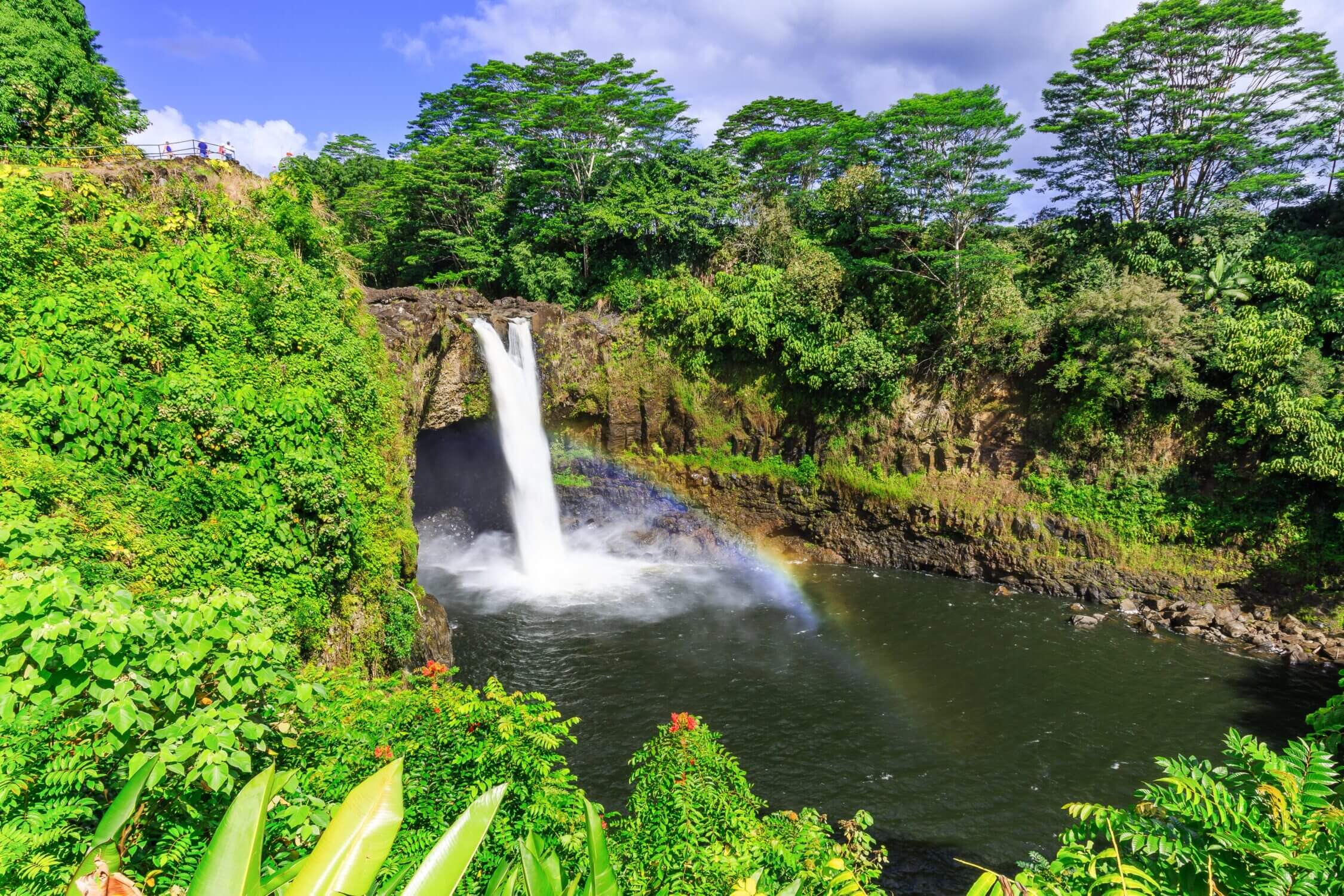
Top Picks for Families on the Hilo Side
- ʻAkaka Falls State Park – A short, scenic loop trail leads to one of Hawaii’s most stunning waterfalls—an easy and rewarding hike even for younger kids.
- Rainbow Falls – Just minutes from downtown Hilo, this easily accessible waterfall is perfect for a quick stop and photo op.
- Liliʻuokalani Gardens – Peaceful Japanese-style gardens where kids can feed koi fish, spot small crabs by the water, and wander over arched bridges.
- Hilo Farmers Market – Open daily, but busiest on Wednesdays and Saturdays—great for fresh tropical fruit, handmade crafts, and warm malasadas.
- Imiloa Astronomy Center – A fun, interactive science center that blends Hawaiian culture with space exploration—perfect for curious kids and a great rainy-day option.
- Hawai‘i Volcanoes National Park – A must-visit for families! Walk through a lava tube, see steaming vents, and if you’re lucky, catch a glimpse of lava activity.
- Local craft fairs and mom-and-pop shops – Hilo’s downtown is full of locally owned businesses where you can find unique gifts and support small makers.
We’ve also stumbled across craft fairs, family-run farms, and historic landmarks just by wandering around. There’s something extra special about the slower pace here—it feels like a true Hawaiian town, not just a tourist hub.
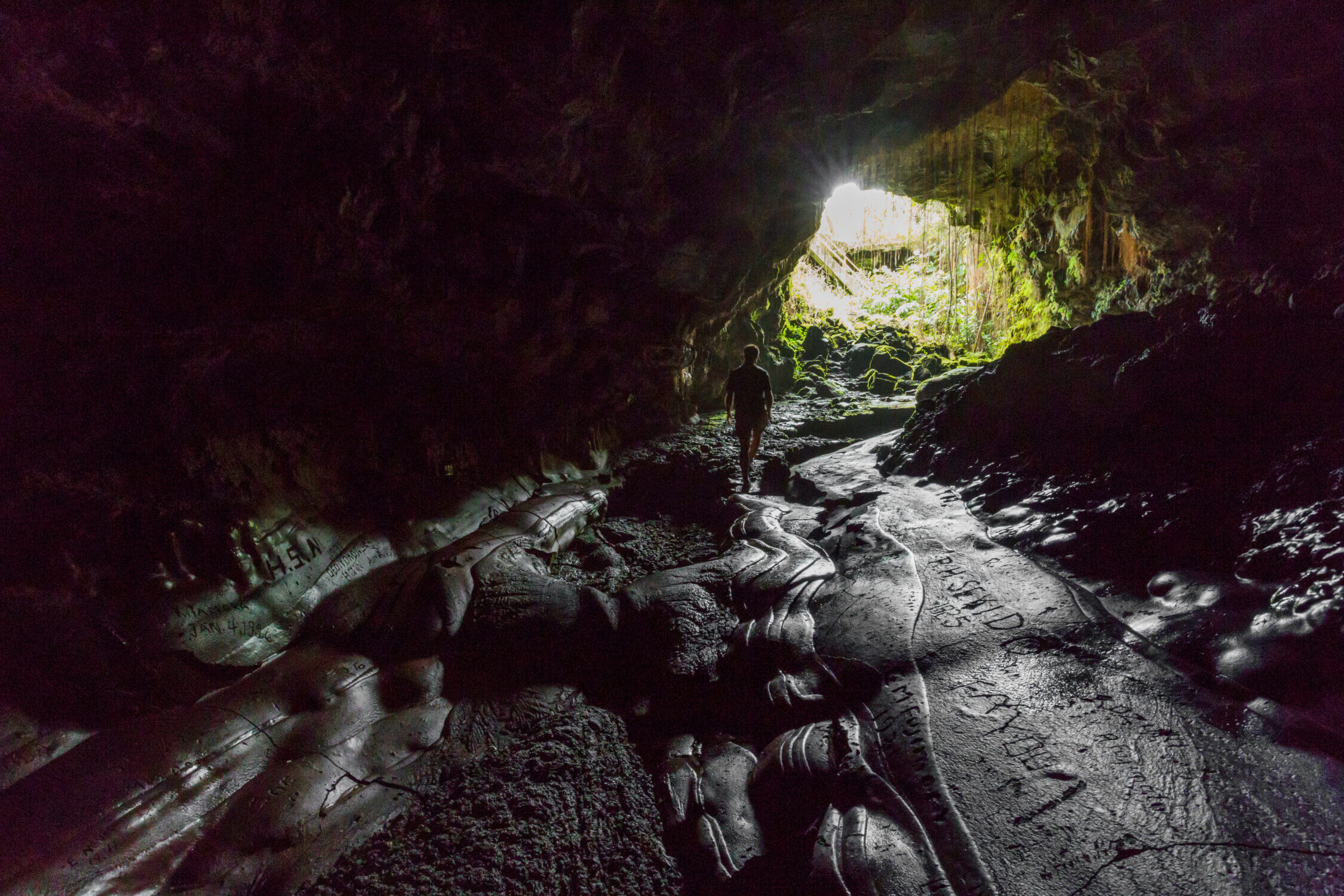
And of course, you’re only about 45 minutes from Hawai’i Volcanoes National Park, which is a must-do if you have curious kids who love science, geology, or just seeing steam rise from the earth!
Tip: Pack a rain jacket and light layers—showers pass quickly, but they do happen.
Kona: Sunshine, Snorkeling, and Resort Life

If your idea of a Hawaii vacation includes warm sun, swimmable beaches, and resort-style relaxation, the Kona sideof the Big Island is a perfect match. Located on the dry, sunny west coast, Kona is the more developed and tourist-friendly side of the island, with plenty of restaurants, shops, and family activities within easy reach.
This is where we stay when we want to slow down and unwind—whether it’s relaxing by the pool, playing on soft sand beaches, or sipping Kona coffee while watching the sunset. The west side’s consistent sunshine and laid-back vibe make it especially easy for families with younger kids, grandparents, or anyone who just wants a no-stress tropical escape.
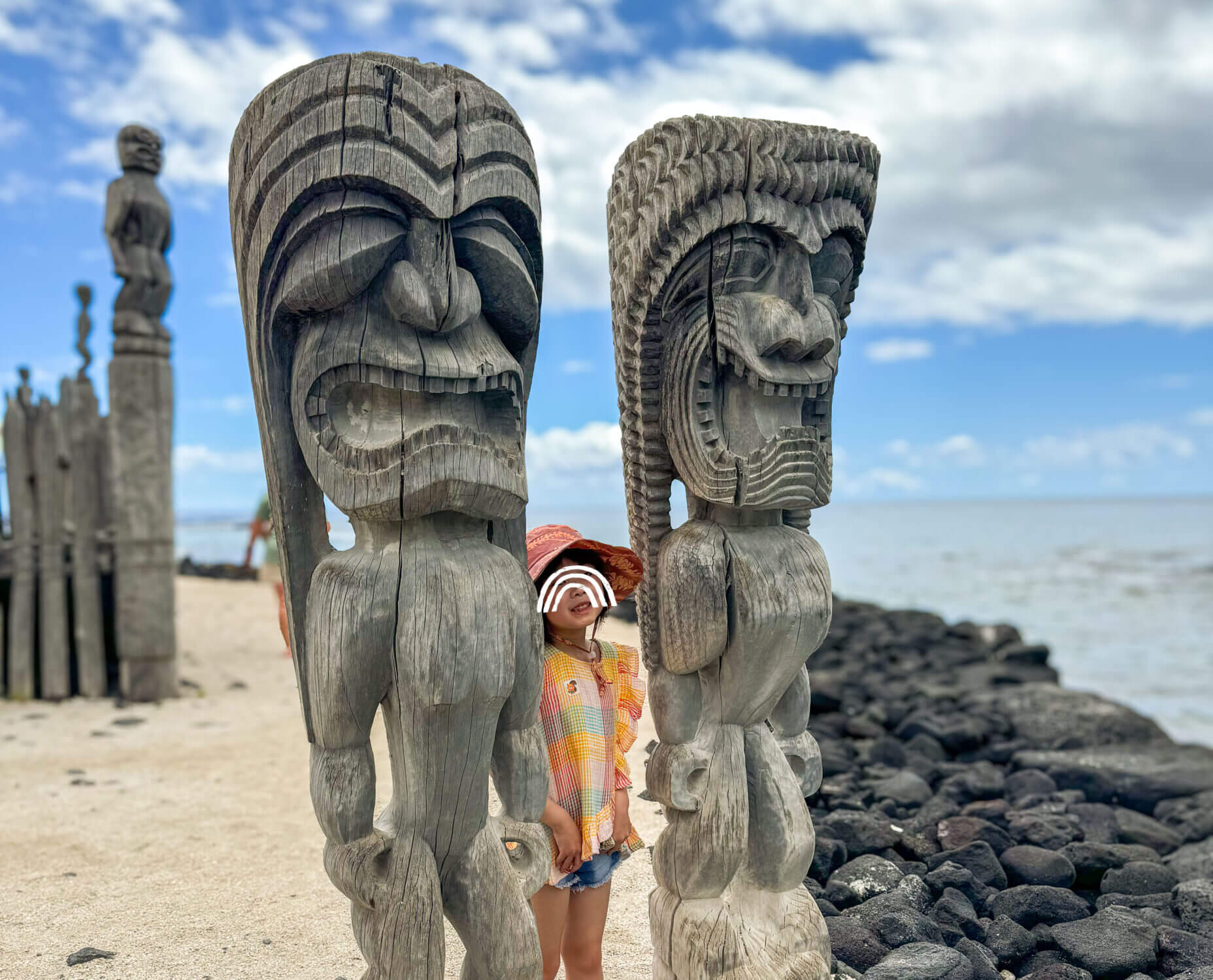
Top Picks for Families on the Kona Side
- Dolphin Quest at Hilton Waikoloa Village – Kids can meet dolphins up close in a safe and educational environment (book ahead!).
- Hapuna Beach State Park – One of our favorite white sand beaches on the island. Wide open space, gentle waves, and great for boogie boarding or relaxing under an umbrella.
- Puʻuhonua o Hōnaunau National Historical Park (City of Refuge) – A peaceful, sacred site where kids can walk among restored Hawaiian structures, see carved statues, and learn the island’s powerful history.
- Kailua-Kona town – A walkable stretch of shops, restaurants, and oceanfront cafes—great for grabbing a bite, buying souvenirs, or just strolling with shave ice in hand.
- Kaloko-Honokōhau National Historical Park – A hidden gem for seeing sea turtles in their natural habitat and learning about ancient Hawaiian fishpond systems.
- Kona coffee farms – Many offer short, family-friendly tours where you can learn how coffee is grown, see scenic plantations, and enjoy a tasting (some even offer chocolate or macadamia nuts for the kids!).
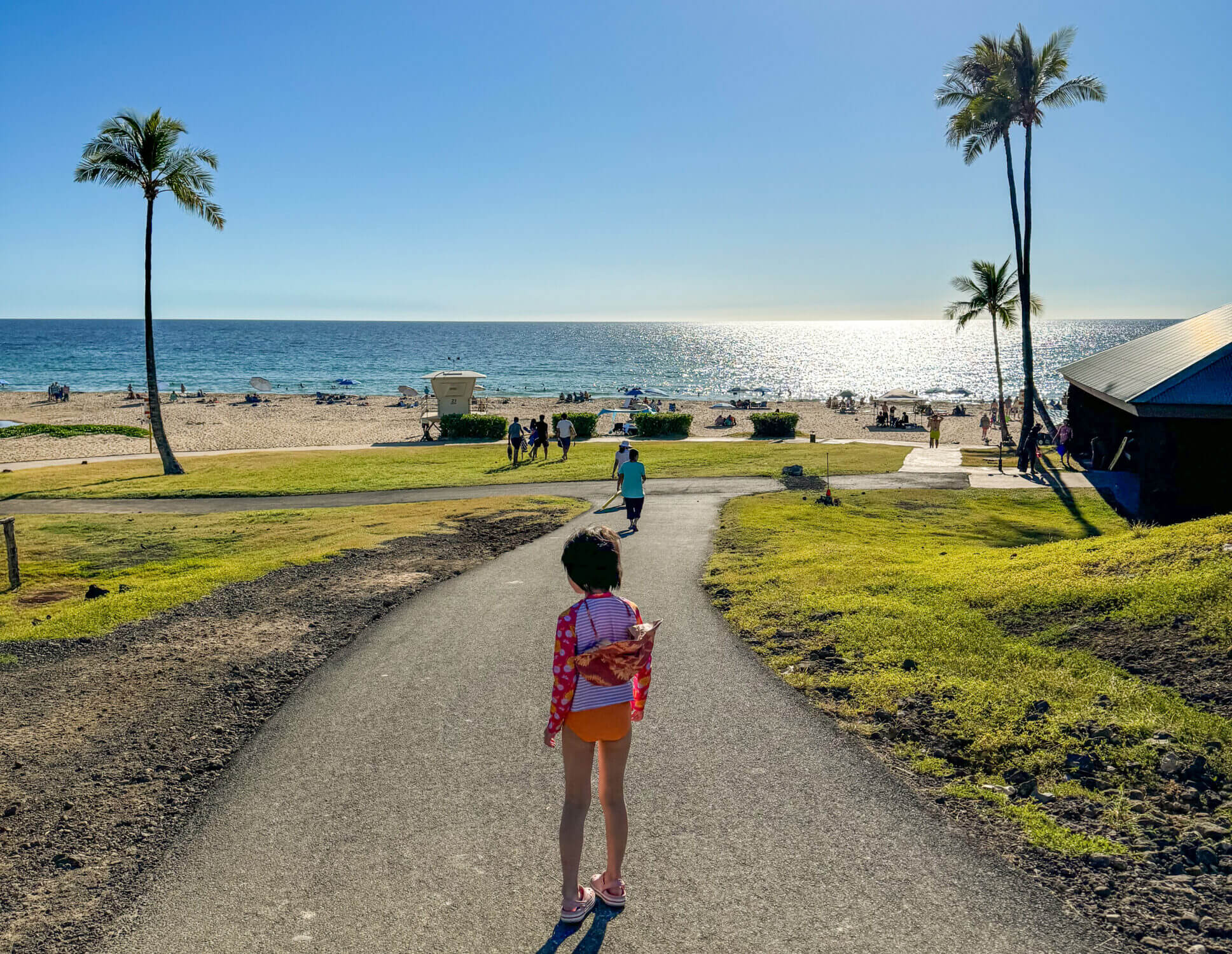
Waikoloa: Where Resort Life Meets Convenience
About 40 minutes north of Kailua-Kona, Waikoloa is a destination in itself. This master-planned resort area on the Kohala Coast is known for its beautiful weather, wide-open ocean views, and a mix of luxury resorts, condos, and vacation rentals—making it ideal for families, multi-generational trips, or anyone looking for a home-away-from-home feel with resort-style perks nearby.
Hilton Waikoloa Village is a sprawling 62-acre oceanfront resort on the Kohala Coast, packed with family-friendly amenities including multiple pools, a saltwater lagoon, cultural activities, and Dolphin Quest. With its on-site tram, boat rides, and endless things to do, it’s the ultimate all-in-one destination for families looking to relax, explore, and have fun without ever leaving the resort.
Flying to the Big Island: Which Airport Should You Choose?
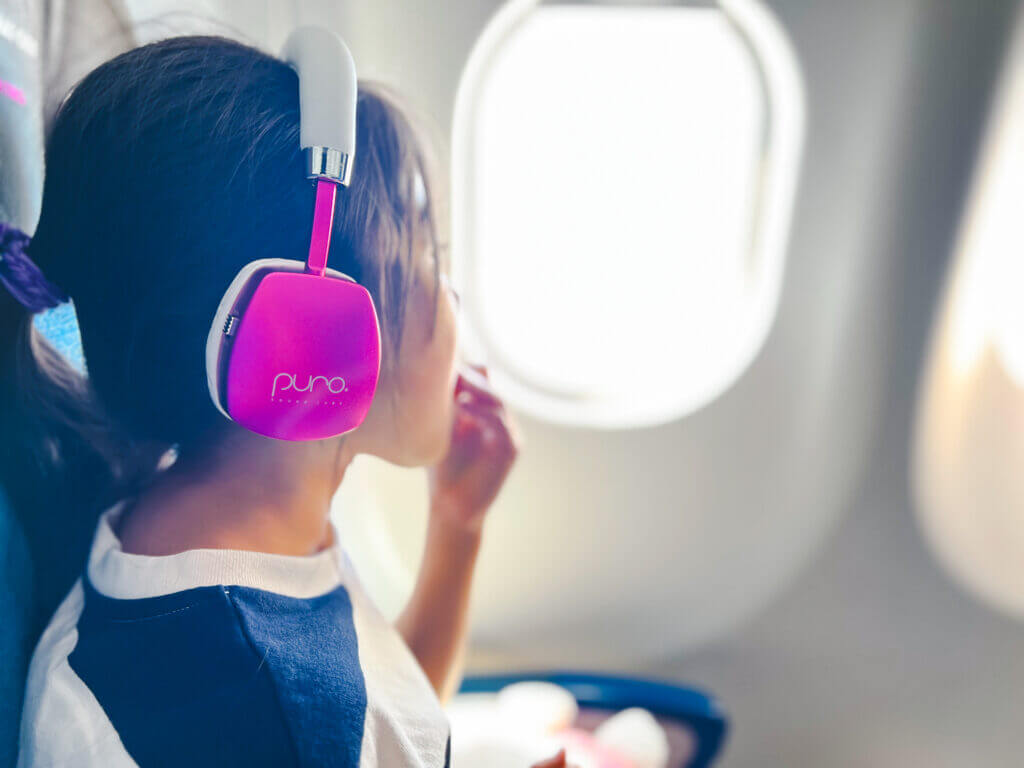
Once you’ve decided whether you’re staying on the Kona side or the Hilo side, the next step is figuring out how to get there. The Big Island has two major airports—and depending on where you plan to stay, it’s worth knowing which one works best for your family.
The Two Main Airports
- Kona International Airport (KOA)
- Located on the west side, just north of Kailua-Kona and Waikoloa. This is the busier of the two airports and where most direct flights from the mainland arrive.
- Hilo International Airport (ITO)
- Located on the east side, in the town of Hilo. Smaller, less crowded, and ideal if you’re planning to stay near the volcano or want easier access to lush waterfalls and rainforests.
Which Airport Is Cheaper?
In general, Kona (KOA) tends to have more flight options and competitive pricing, especially if you’re flying from the mainland U.S. Major airlines like Alaska, Hawaiian, Southwest, Delta, and United all fly into Kona, often with direct routes from the West Coast.
Hilo (ITO) sometimes has slightly higher fares or requires a layover in Honolulu or Maui. That said, if your itinerary is centered around Volcanoes National Park or the east side of the island, flying into Hilo might save you hours of drive time.
Our Family Tip
On our most recent trip, we flew into Kona because we were staying on the west side with grandparents and didn’t want to make the long cross-island drive. It was easy, convenient, and had plenty of rental car options. Plus, the kids loved walking off the plane straight into the warm, open-air terminal!
A Must-Read for Families: Don’t Take Lava Rocks Home!
This next part is especially important if you’re traveling with kids—especially those who love picking up every cool rock, shell, or shiny object they find on the ground (we’ve been there!). No matter which side of the island you stay on, you’ll see lava rocks everywhere—from the black sand beaches to the hiking trails and scenic drives. And while it may be tempting to bring one home as a souvenir, please don’t.
Respecting Pele and the Land
One thing we always teach our kids when visiting the islands is the importance of respecting Hawaiian culture and legends—and one of the most well-known stories is about Pele, the Hawaiian goddess of volcanoes and fire.
According to Hawaiian belief, Pele lives in the crater of Halemaʻumaʻu, inside Kīlauea at Hawaiʻi Volcanoes National Park. She’s not just a myth—she’s considered a living force, a powerful and sacred figure whose spirit can be felt throughout the Big Island, from the flowing lava fields to the black sand beaches.
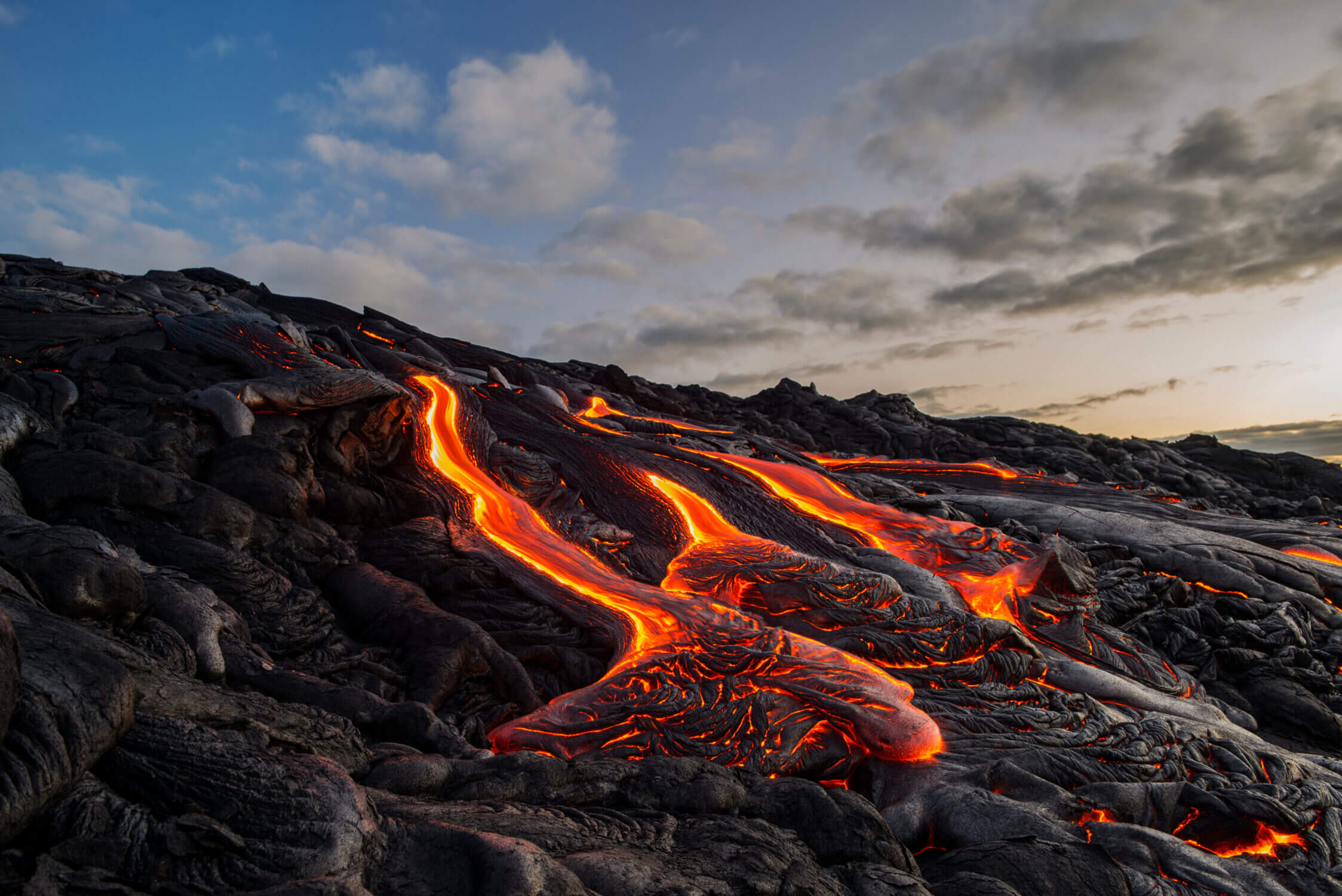
Bad Luck
Did I mention this already? If there’s one thing you should absolutely not do during your visit, it’s this:
Don’t take lava rocks, sand, or volcanic ash back home.
Many tourists are tempted to pocket a piece of lava as a souvenir. But taking lava from the island is seen as deeply disrespectful to Pele and the ʻāina (land)—and it’s believed to bring serious bad luck.
You’d be surprised how many people actually mail the rocks back after experiencing job loss, car trouble, or personal issues they believe are tied to “Pele’s Curse.”
Even park rangers at Hawaiʻi Volcanoes National Park receive dozens of returned rocks each week, often with handwritten apology notes from people asking for forgiveness and hoping to reverse their misfortune.
What to Do Instead
If your kids want a keepsake from the trip:
- Visit a local shop that sells lava-inspired jewelry or art made with permission and sourced off-island
- Let them pick out a postcard or book from the visitor center at the national park
- Or better yet, take a family photo in front of a lava field—and let the memory, not the rock, be your souvenir
Including this kind of cultural respect in your trip not only helps preserve the island, but also teaches kids that Hawaii is more than a vacation spot—it’s a place with living stories, traditions, and deep spiritual roots.
Did You Know? The Big Island Has the Most National and Historical Parks in Hawaii
One of the things that makes the Big Island so special—especially for families—is the number of national and historical parks you can explore. In fact, the Big Island has more of these protected sites than any other island in Hawaii. So if your kids love wide open spaces, volcanoes, petroglyphs, or walking through places with real cultural significance, this island is full of unforgettable learning experiences.
Some of our favorite national and historical parks include:
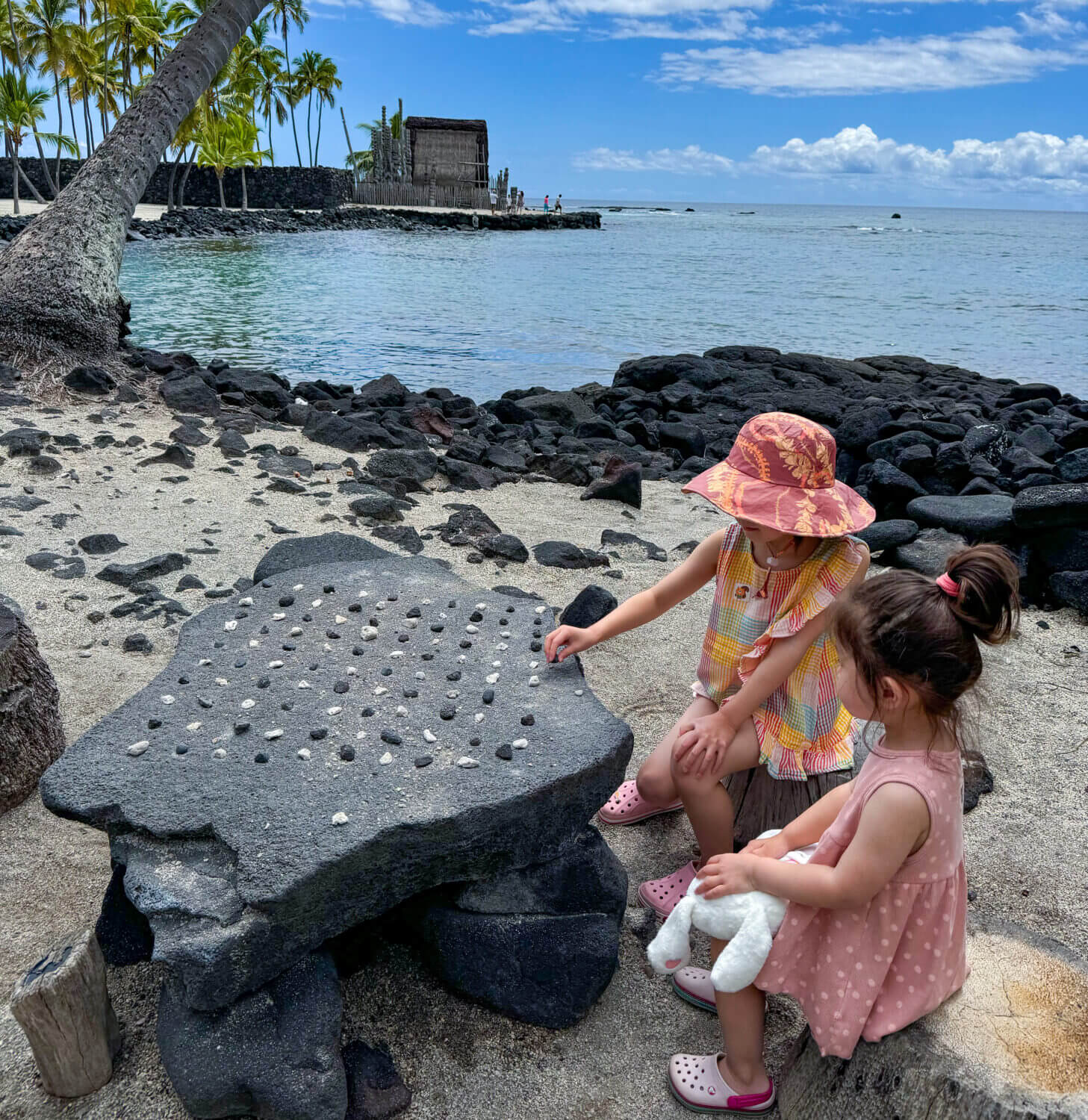
- Hawaiʻi Volcanoes National Park – home to Kīlauea and Mauna Loa, with lava tubes, steam vents, and crater hikes.
- Puʻuhonua o Hōnaunau National Historical Park – the sacred City of Refuge where ancient Hawaiians could seek forgiveness.
- Kaloko-Honokōhau National Historical Park – a coastal park where you can spot sea turtles and learn about Hawaiian aquaculture.
- Puʻukoholā Heiau National Historic Site – King Kamehameha I’s last major heiau (temple), built as a sign of power and unity.
- Lapakahi State Historical Park – a partially restored Hawaiian fishing village with interpretive trails.
Whether your family loves hands-on exploration or you’re just looking for a scenic picnic stop with real cultural value, these parks add so much depth to a Big Island trip.
Final Thoughts: Kona or Hilo – Which Side is Right for Your Family Vacation?
Choosing between Kona and Hilo really depends on what kind of experience your family is looking for. If you’re dreaming of sunny beach days, resort-style relaxation, and convenient access to snorkeling and family-friendly dining, Kona is the way to go. It’s the more developed side of the island with consistent weather and plenty of activities for kids of all ages.
On the other hand, Hilo offers a lush, authentic Hawaiian experience—perfect for families who love waterfalls, botanical gardens, and cultural exploration. It’s quieter, more local, and closer to iconic sites like Hawai‘i Volcanoes National Park and Rainbow Falls.
Whichever side you choose, the Big Island has something unforgettable to offer every family. And if you can, try to explore both—each side shows a different and beautiful side of Hawai‘i.

